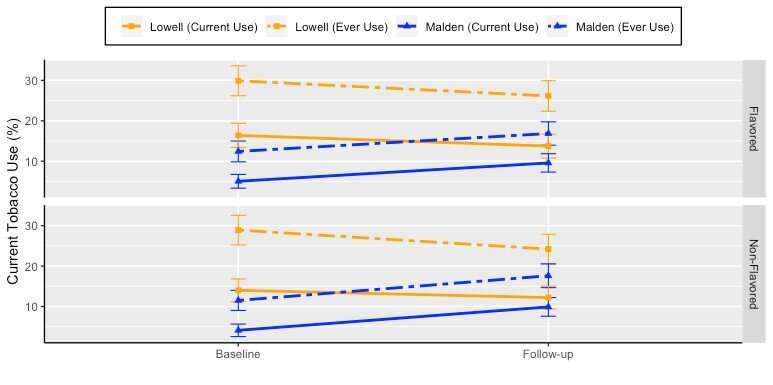A tale of two cities: Impact of reducing teens’ access to flavored tobacco products

Restricting youth access to flavored tobacco products holds the promise of reducing their overall tobacco use, according to a new study in the American Journal of Preventive Medicine.
The study found that the implementation of a flavored tobacco restriction policy (FTRP) in one Massachusetts community was associated with reduced availability of flavored tobacco in retailers and youth use of both flavored and non-flavored tobacco within six months of the policy’s implementation. Conversely, during the same period tobacco use among youth increased in a nearby community without this restriction.
“Our study suggests that with rigorous enforcement, flavor restriction policies have the potential to curb youth tobacco use in as little as six months,” explained lead investigator Melody Kingsley, MPH, Massachusetts Department of Public Health, Boston, MA, USA. “With a longer follow-up time, we expect these trends will continue. The policy may also begin to impact and reduce other tobacco-related outcomes, such as initiation on flavored tobacco, as exposure to flavored tobacco among young people continues to decline.”
Troubling nationwide increases in youth e-cigarette use led the US Surgeon General to issue an advisory about the epidemic in 2018. More recently, the emergence of lung disease linked to vaping and e-cigarettes has underscored the critical importance of developing, implementing, and evaluating population-wide strategies to curb youth use of these products. The majority of youth using tobacco use flavored products, which are available in thousands of distinct flavors with youth appeal. In response, communities in states across the country, including Massachusetts, have passed FTRPs that restrict sales of flavored tobacco. The US Food and Drug Administration has proposed increasing restrictions on the sale of flavored tobacco nationwide as well.
Ms. Kingsley noted that some municipalities have started to include menthol flavoring in FTRPs to counter the tobacco industry’s targeting of communities of color, LGBTQ communities, low-income communities, and youth overall. “Flavor restriction policies that include menthol may have an even greater impact on youth tobacco use than seen in our study,” she added.
Using data collected from tobacco retailers and high school youth in 2016-2017, the study assessed the impact on youth access to and use of tobacco products six months after the policy was implemented in Lowell, MA. The policy restricted the sale of all flavored tobacco products (excluding menthol but including e-cigarettes) to adult-only (21 years or older) establishments such as vape shops, tobacconists, and smoking bars. The investigators then evaluated availability and use of these products in Malden, MA, a similar community nearby that did not enact the policy (at the time of the study).
Availability of flavored tobacco products decreased by 70 percent in Lowell when assessed six months after policy implementation. No significant changes in flavored tobacco availability occurred in Malden over the same time period. During the same timeframe, current use (past 30 days) of both flavored and non-flavored tobacco decreased in Lowell but increased in Malden. Changes from baseline to follow-up were significantly different between communities (flavored tobacco: -5.7 percent; non-flavored tobacco: -6.2 percent). Similarly, ever-use of both flavored and non-flavored tobacco decreased in Lowell, but increased in Malden. The change in ever use of non-flavored tobacco was significantly different between communities, while the change in ever use of flavored tobacco approached significance (flavored tobacco: -6.1 percent; non-flavored tobacco: -8.6 percent).
Source: Read Full Article



